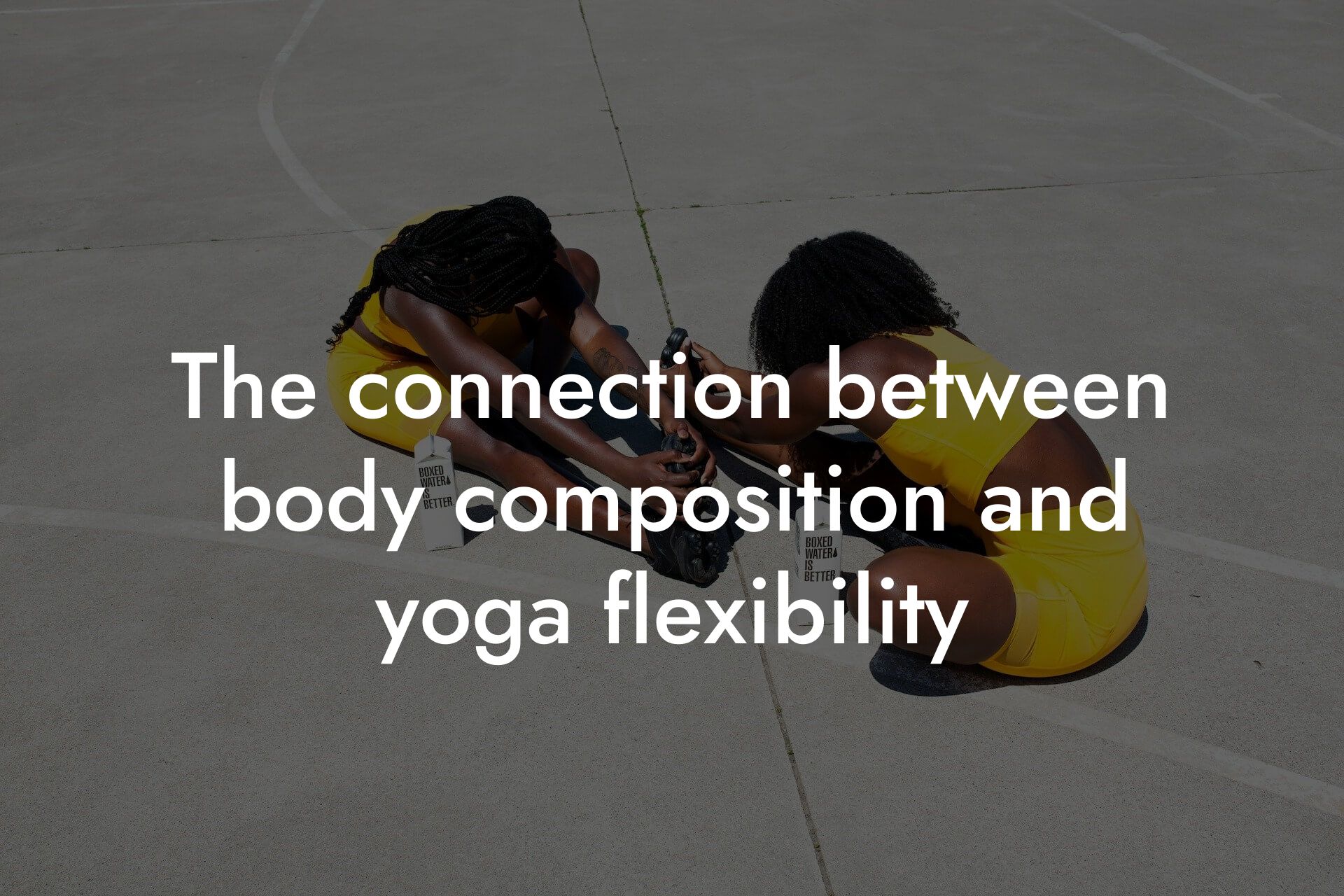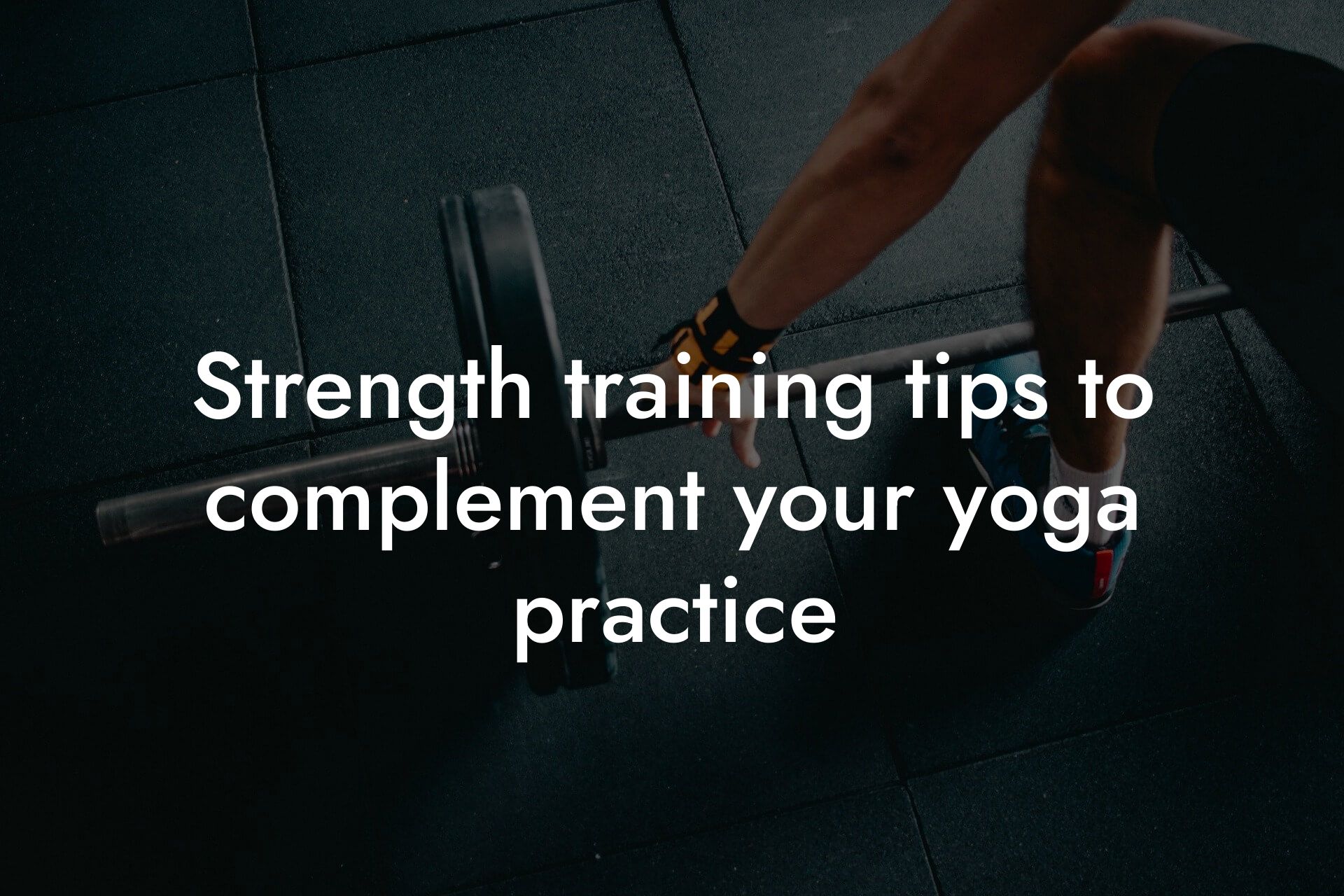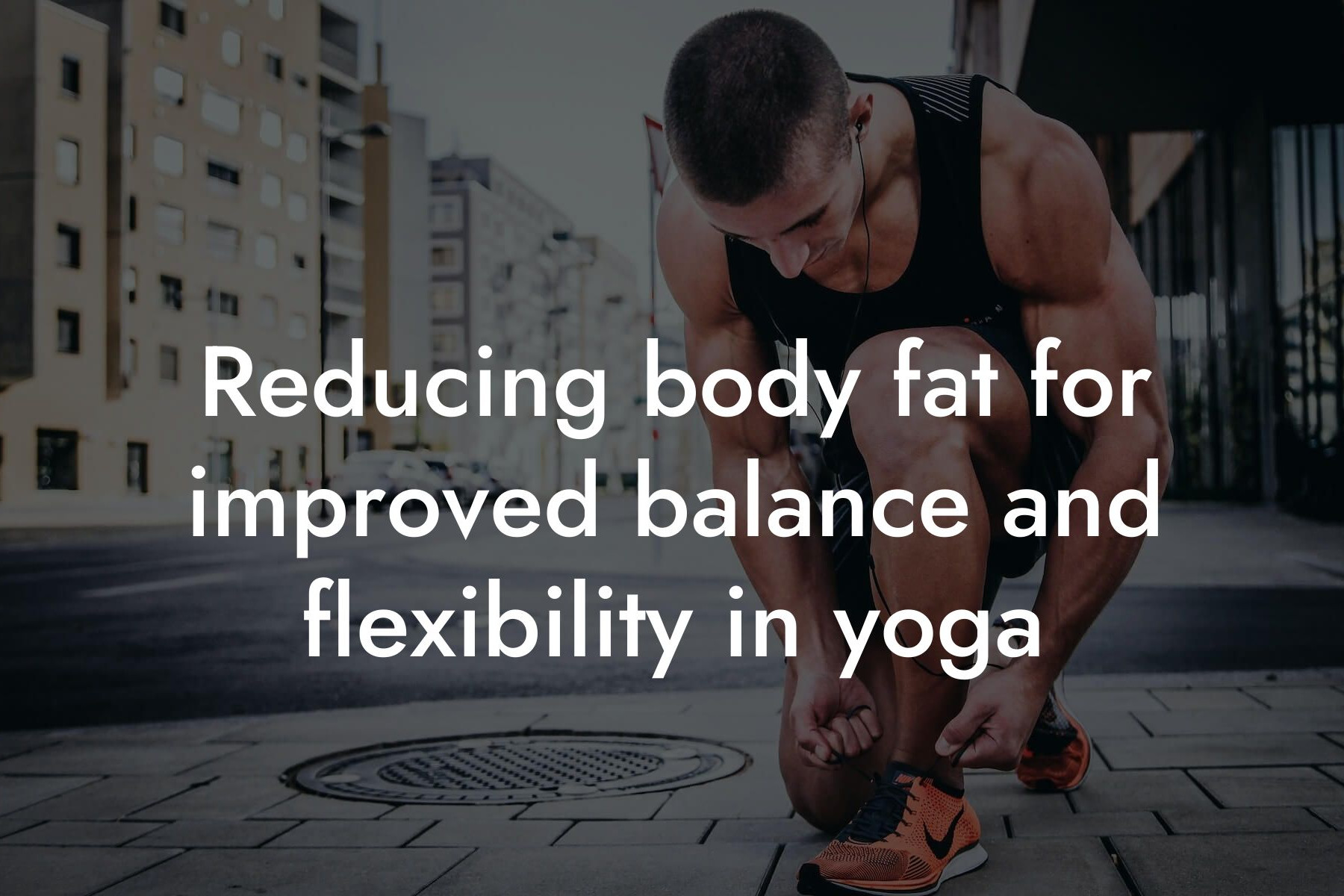As high-earning professionals, you understand the importance of maintaining a healthy and fit physique. Not only does it boost your confidence and energy levels, but it also helps you perform at your best in your personal and professional life. One of the most effective ways to achieve this is by incorporating yoga into your fitness routine. In this article, we'll explore the benefits of yoga in maintaining muscle tone and flexibility, and provide you with a comprehensive guide on how to get started.
Table of Contents
- What is Yoga and How Does it Benefit Muscle Tone and Flexibility?
- The Science Behind Yoga and Muscle Tone
- Yoga and Flexibility: How it Works
- Types of Yoga for Muscle Tone and Flexibility
- Creating a Yoga Practice for Muscle Tone and Flexibility
- Common Yoga Poses for Muscle Tone and Flexibility
- Incorporating Yoga into Your Fitness Routine
- Frequently Asked Questions
What is Yoga and How Does it Benefit Muscle Tone and Flexibility?
Yoga is a holistic practice that combines physical postures, breathing techniques, and meditation to promote physical, mental, and emotional well-being. When it comes to muscle tone and flexibility, yoga is an excellent choice because it targets multiple muscle groups simultaneously, improving overall muscle strength and flexibility. Yoga also increases blood flow and oxygenation to the muscles, which helps to reduce muscle soreness and improve recovery.
The Science Behind Yoga and Muscle Tone
Research has shown that yoga can increase muscle strength and tone by stimulating the growth of muscle fibers. This is achieved through the activation of muscle protein synthesis, which is the process by which the body builds new muscle tissue. Yoga also improves muscle endurance, allowing you to perform daily activities with more energy and efficiency.
Yoga and Flexibility: How it Works
Yoga is renowned for its ability to increase flexibility and range of motion. This is achieved through the gentle stretching and lengthening of the muscles, tendons, and connective tissue. Regular yoga practice can help to improve flexibility by increasing the production of lubricating fluids in the joints, reducing inflammation, and promoting the growth of new connective tissue.
Types of Yoga for Muscle Tone and Flexibility
There are several types of yoga that are particularly beneficial for maintaining muscle tone and flexibility. These include:
Vinyasa Flow Yoga: This dynamic and flowing style of yoga is excellent for building muscle strength and endurance. It involves synchronizing breath with movement, flowing from one pose to another.
Hatha Yoga: This traditional and classical style of yoga focuses on physical postures and breathing techniques. It's an excellent choice for building muscle tone and flexibility.
Ashtanga Yoga: This fast-paced and physically demanding style of yoga is ideal for building muscle strength and endurance. It involves a set sequence of postures that are designed to challenge the body.
Yin Yoga: This slow-paced and meditative style of yoga is excellent for improving flexibility and range of motion. It involves holding passive postures for extended periods to target the deeper tissues of the body.
Creating a Yoga Practice for Muscle Tone and Flexibility
To get started with yoga, it's essential to create a practice that's tailored to your needs and goals. Here are some tips to help you get started:
Start slow: Begin with short practices of 20-30 minutes, 2-3 times a week. As you become more comfortable, you can gradually increase the duration and frequency of your practice.
Focus on alignment: Pay attention to your posture and alignment in each pose. This will help you target the correct muscle groups and avoid injury.
Use props: Props such as blocks, straps, and blankets can help you modify poses to suit your needs and abilities.
Listen to your body: Honor your body's limitations and take regular breaks to rest and recover.
Common Yoga Poses for Muscle Tone and Flexibility
Here are some common yoga poses that are excellent for building muscle tone and flexibility:
Downward-Facing Dog: This pose targets the arms, shoulders, and core muscles, improving muscle strength and tone.
Warrior II: This pose targets the legs, hips, and core muscles, improving muscle strength and flexibility.
Tree Pose: This pose targets the ankles, calves, and core muscles, improving balance and flexibility.
Seated Forward Fold: This pose targets the hamstrings, calves, and spine, improving flexibility and range of motion.
Incorporating Yoga into Your Fitness Routine
Yoga can be a valuable addition to your fitness routine, providing a holistic approach to physical fitness. Here are some tips to help you incorporate yoga into your routine:
Make it a habit: Aim to practice yoga at least 2-3 times a week, ideally at the same time each day.
Combine with other exercises: Yoga can be combined with other forms of exercise such as weightlifting, cardio, and Pilates to provide a well-rounded fitness routine.
Focus on recovery: Yoga can be an excellent tool for recovery, helping to reduce muscle soreness and improve flexibility.
Maintaining muscle tone and flexibility is essential for overall health and well-being. Yoga is an excellent way to achieve this, providing a holistic approach to physical fitness that targets multiple muscle groups simultaneously. By incorporating yoga into your fitness routine, you can improve muscle strength and tone, increase flexibility, and enhance your overall physical performance. Remember to start slow, focus on alignment, and listen to your body to get the most out of your yoga practice.
At Tano Performance Group, we understand the importance of maintaining a healthy and fit physique. Our DEXA machine provides a comprehensive body assessment, giving you the information you need to take your fitness to the next level. Contact us today to learn more about our services and how we can help you achieve your fitness goals.
Frequently Asked Questions
What is muscle tone and why is it important?
Muscle tone refers to the state of partial contraction of muscles, which helps maintain posture, balance, and movement. Having good muscle tone is essential for overall physical fitness, as it improves athletic performance, reduces the risk of injury, and enhances overall physical appearance.
How does yoga help with maintaining muscle tone?
Yoga helps maintain muscle tone by engaging various muscle groups through a range of postures, movements, and breathing techniques. Regular yoga practice can improve muscle strength, flexibility, and endurance, leading to better overall muscle tone.
What is flexibility, and why is it important for high-earning professionals?
Flexibility refers to the range of motion in a joint or a series of joints. As high-earning professionals, you likely spend a significant amount of time sitting, which can lead to reduced flexibility and increased risk of injury. Maintaining flexibility through yoga can help improve posture, reduce muscle tension, and enhance overall physical well-being.
How can yoga improve flexibility?
Yoga improves flexibility by increasing the range of motion in joints, lengthening muscles and connective tissue, and improving circulation. Regular yoga practice can help reduce stiffness, improve balance, and enhance overall flexibility.
What are the benefits of combining yoga with other forms of exercise?
Combining yoga with other forms of exercise, such as weightlifting or cardio, can enhance overall physical fitness, improve muscle tone, and increase flexibility. Yoga can also help with recovery and reduce the risk of injury from other forms of exercise.
How often should I practice yoga to see improvements in muscle tone and flexibility?
Aim to practice yoga at least 2-3 times per week, with a minimum of 30 minutes per session. Consistency is key to seeing improvements in muscle tone and flexibility. However, even practicing yoga once a week can be beneficial for overall physical well-being.
What type of yoga is best for improving muscle tone and flexibility?
Vinyasa flow, Ashtanga, and Hatha yoga are excellent for improving muscle tone and flexibility. These styles of yoga focus on flowing movements, holding postures, and breathing techniques, which can help engage various muscle groups and improve flexibility.
Can yoga help with weight loss and body fat reduction?
Yes, yoga can help with weight loss and body fat reduction. While yoga may not burn as many calories as other forms of exercise, it can help improve metabolism, increase muscle mass, and enhance overall physical fitness, leading to weight loss and body fat reduction.
How can yoga improve bone density?
Yoga can improve bone density by increasing weight-bearing activity, which can help stimulate bone growth and density. Additionally, yoga can improve balance and reduce the risk of falls, which can lead to fractures and osteoporosis.
What are some common yoga poses that can help improve muscle tone and flexibility?
Some common yoga poses that can help improve muscle tone and flexibility include Downward-Facing Dog, Warrior II, Triangle Pose, Seated Forward Fold, and Tree Pose. These poses engage various muscle groups, improve flexibility, and enhance overall physical fitness.
Can yoga help with stress relief and mental well-being?
Yes, yoga can help with stress relief and mental well-being. Yoga combines physical postures, breathing techniques, and meditation to reduce stress, improve mood, and enhance overall mental well-being.
How can I modify yoga poses to suit my fitness level?
Modify yoga poses by listening to your body and honoring its limitations. Use props, such as blocks, straps, or blankets, to support your body in various postures. You can also reduce the intensity or duration of your practice to suit your fitness level.
What are some common mistakes to avoid when practicing yoga?
Common mistakes to avoid when practicing yoga include forcing your body beyond its limitations, not listening to your body, and not engaging your core. Additionally, avoid practicing yoga on a full stomach, and make sure to stay hydrated throughout your practice.
How can I incorporate yoga into my busy schedule?
Incorporate yoga into your busy schedule by starting small, even just 10-15 minutes per day. You can also try practicing yoga during your lunch break, before bed, or first thing in the morning. Consistency is key to seeing improvements in muscle tone and flexibility.
What are some yoga props that can help improve my practice?
Yoga props, such as blocks, straps, blankets, and bolsters, can help improve your practice by providing support, modifying postures, and enhancing alignment. These props can be especially helpful for beginners or those with injuries or limitations.
Can yoga help with injury prevention and recovery?
Yes, yoga can help with injury prevention and recovery. Yoga can improve flexibility, strength, and balance, reducing the risk of injury. Additionally, yoga can help with recovery by improving circulation, reducing inflammation, and enhancing overall physical well-being.
How can I find a qualified yoga instructor?
Find a qualified yoga instructor by researching local studios, asking for referrals, and checking credentials. Look for instructors with experience teaching yoga for beginners, as well as those with specialized training in areas such as injury prevention or recovery.
What should I wear to a yoga class?
Wear comfortable, breathable clothing that allows for a full range of motion. Avoid anything too loose or baggy, and opt for clothing that wicks away moisture. You may also want to bring a yoga mat, towel, and water bottle to class.
Can I practice yoga at home, or do I need to go to a studio?
You can practice yoga at home or in a studio. Home practice can be convenient and comfortable, while studio practice can provide guidance, community, and accountability. You can also try online classes or videos for added convenience.
How can I track my progress and stay motivated?
Track your progress by setting goals, taking progress photos, and monitoring your practice. Stay motivated by finding a yoga buddy, rewarding yourself for milestones, and celebrating small victories along the way.
What are some common myths about yoga that I should know about?
Common myths about yoga include the idea that yoga is only for flexible people, that yoga is a religion, or that yoga is only for relaxation. Yoga is for everyone, regardless of age, size, or fitness level, and can be adapted to suit individual needs and goals.
How can I incorporate yoga into my daily routine?
Incorporate yoga into your daily routine by making it a priority, scheduling it into your calendar, and finding a consistent time and place to practice. You can also try incorporating yoga into your daily activities, such as taking a few deep breaths during meetings or stretching during breaks.
What are some tips for beginners who are new to yoga?
Tips for beginners include starting slow, listening to your body, and honoring its limitations. Avoid comparing yourself to others, focus on your breath, and have fun. Remember, yoga is a journey, and it's okay to start small and build up gradually.
How can I use yoga to improve my overall physical appearance?
Use yoga to improve your overall physical appearance by combining it with other forms of exercise, such as weightlifting or cardio. Yoga can help improve muscle tone, flexibility, and balance, leading to a more toned and athletic physique.
Here are some related articles you might love...
- The connection between body composition and yoga flexibility
- Strength training tips to complement your yoga practice
- Reducing body fat for improved balance and flexibility in yoga
- Nutrition strategies for sustained energy in yoga practice
- How DEXA scans can benefit yoga enthusiasts
- Bone density and its impact on yoga practice
- Balancing strength, flexibility, and mindfulness in yoga
- Recovery techniques for yogis after intense sessions
- The role of yoga in injury prevention and recovery
Zak Faulkner
Zak Faulkner is a leading authority in the realm of physical health and body composition analysis, with over 15 years of experience helping professionals optimise their fitness and well-being. As one the experts behind Tano Performance Group, Zak has dedicated his career to providing in-depth, science-backed insights that empower clients to elevate their physical performance and overall health.
With extensive knowledge of DEXA technology, Zak specializes in delivering comprehensive body assessments that offer precise data on body fat, muscle mass, bone density, and overall physique. His expertise enables individuals to make informed decisions and achieve their fitness goals with accuracy and confidence. Zak’s approach is rooted in a deep understanding of human physiology, combined with a passion for helping clients unlock their full potential through personalised strategies.
Over the years, Zak has earned a reputation for his commitment to excellence, precision, and client-focused service. His guidance is trusted by top professionals who demand the best when it comes to their health. Whether advising on fitness programs, nutritional strategies, or long-term wellness plans, Zak Faulkner’s insights are a valuable resource for anyone serious about taking their health and fitness to the next level.
At Tano Performance Group, Zak continues to lead our Content Team revolutionising how professionals approach their physical health, offering unparalleled expertise that drives real results.




